QuestionQUESTION: Hello, I have noticed that for a while my rat has had little sores behind his ears and on his back. At first they were just little and I thought they may be a result of him scratching too much, however it has gotten worse recently and he has now got bald patches where some of the sores have gotten worse. He will not stop scratching and I think he is doing serious damage to himself. His claws aren't that sharp but it's still taking off a lot of fur.
I bathed him a few days ago in case there was something irritating his skin and I clean his cage often (I use News paper pellets) Nothing has changed recently in his diet though his fur is starting to go grey in some areas (He is 2 years old)
I've also bathed him in salt water to hopefully fight off any infection that he might get but I am scared that this will get worse. He doesn't have any visible parasites and to my knowledge hasn't had contact with any other rodents.
What should I do? I have called Vets but due to holidays none of them will take him unless it is a serious issue.
ANSWER: Wow it must be the season for this. I have every other post about the same thing: itchy ratties, sores on their neck, face, behind ears, etc...balding in spots. Often, the time of year is to blame to when parasites are not playing a role in it. Dry air due to the heat being on is one reason for dry skin on rats and this can cause itchy skin from being dry.
Another reason is diet. Food allergies, especially foods high in protein, can cause itchy skin that has the rat scratching so much he starts to lose his fur in places as well which prompts me to ask you what his diet consists of?
Even if he has been on the same food since he was young, protein that is high can take its toll on an older rat, from skin problems to the most dreaded and the one reason we suggest keeping protein levels at or below 18 to 15 percent is kidney disease in older rats.
Mites or rat lice are also another culprit and although usually visible eventually to the naked eye, the critters spend their time on the rat long enough to feed on their blood and they live in the bedding or within the cage surroundings wherever they can hide. With the severity of his itching (so much that he is now showing signs of alopecia) I would think the parasite infestation would be severe enough you would see at least one or two bug and you haven't, so that makes me go hmmmmmm.....and focus more on diet or dry skin due to his environment.
For now, you can use hydrocortisone cream to help aid in the itching and dryness of his skin and neosporin ointment to help keep the scabs free from bacteria. If you notice the bald spots developing sores or ulcers, that means infection has set it, usually staph, since it is the normal flora found on the rats skin anyhow, and this will mean he may need systemic antibiotics. First things first...what does his daily diet consist of? After that, we can move on from there.
Happy New year
---------- FOLLOW-UP ----------
QUESTION: Thanks so much for responding.
I've had a look into his diet over the last few days, He has a bowl of Rabbit & Guinea pig mix as his dry food, it has alfalfa and a mix of dried fruits as well as the usual pellets and some seeds. I only refill this once he finishes it or if it's a fare few days old.
Otherwise for fresh fruit and vegetables I give him mainly things like carrots, tomatoes, a very small amount of lettuce once in a while, cucumber, apples and Banana.
He does have some cloth bedding in his cage, I give him a scrap of towel every now and then to make a nest out of but I throw it out after a couple of cage changes.
Is newspaper bedding likely to harbor parasites? What would you recommend as the preferred bedding?
Regards,
AnswerHi! Thanks for answering me back right away!
The problem is his food.Like people, rats are omnivores. Its not a very good idea to feed your rat foods made for another species unless they share the same nutritional needs. Your rat does not have the same nutritional needs as rabbits or guinea pigs have. Guinea pigs cannot make vitamin C, therefore it is added in their food and rats on the other hand, do not need extra vitamin C which your rat is getting by eating guinea pig food. As for the alfafa, rats cannot digest it and have strong allergies to alfafa.
Also the protein in this food is way to high. Rats cannot have high protein or fats. High protein diets cause deadly kidney disease in rats when they get older not to mention high protein diets cause severe itching, which leads to scabs and loss of fur.
Your rat should be eating food made for rats such as harlan teklad rat blocks,mazuri rodent blocks, oxbow regal rat, which are both 15 percent animal protein.
URL for harlan lab blocks:
http://www.harlan.com.
Mazuri lab blocks are found at most pet store chains
Regal rat by oxbow:
http://www.oxbowhay.com/link.sp?page=RegalRat
Also, you can easily make your own rat food by following various recipes and in fact, its kind of fun to try new things on the ratties to see how they react.
For starters, you can make your own rat chow by using various breakfast cereals and other things good for rats mixed together using the following:
Innova Senior OR Nutro light DOG FOOD
Puffed wheat
puffed rice
rice chex
total cereal
dry oatmeal
1/2 lb dry pasta
The tri-colored uncooked macaroni, with spinach and tomato flavors
dried fruits such as dried bananas and cranberries
As for veggies and such, good source of nutrition for rats are found in these foods:
veggies (fresh and frozen), including broccoli, cauliflower, carrots, peas, corn, and lima beans
fruits (fresh and frozen), including watermelon, blueberries,strawberries.
Here is a great source to buy dried veggies and fruits:
http://www.justtomatoes.com/
As for bedding, as you are doing, it is wise to avoid litter that contains dangerous phenol oils such as cedar and pine litter. It may take care of odors but it is very bad for rats lungs and causes liver disease, allergies and even cancer in rats as they age. Its sad pet stores continue to stock these two types of bedding and even push it to be sold to new customers.
As for as using cloth bedding: this can help with dust and allergies but it can also promote strong odor from urine and same for the scraps of towels. If they become urine soaked, the odor of ammonia can trigger mycoplasmosis in rats.
Newspaper bedding is nice, but it also doesn't absorb odor well and may need changed more often than other litters.
You can try aspen, carefresh or yesterdays news and see what you think. I prefer aspen and have my rats litter trained which is pretty easy to do. Rats tend to urinate in the same area so you can note that area, fill a rectangle box or rectangle plastic container with aspen litter/bedding and place it in the corner where the rat is going most. If the rat continues to poop outside the box, you can collect the poohs, put it in the litter box and wait for them to get the idea. It is pretty easy to train them but remember not to put litter anywhere else in the cage, only in the litter pan. You can offer your rat plain white paper towels. Generic paper towels for just a dollar a roll are fine, or even top brands like bounty or viva, which are highly absorbent but pricey when you may need to toss them daily and add new ones. My rats LOVE when I give them sheets of paper towels. I usually line their sleeping area like their igloos or other hidey houses with strips of paper towels and if they are urine soaked at the end of the day, they get new ones. They have a blast tearing them up, shredding them, arranging them, dragging them around and making cozy beds with them. Some rats will pee in their sleep, others wont, thus saving the paper towels and not having to change them out daily, but my males wet to bed. LOL!
Anyhow, you asked if newspaper bedding likely to harbor parasites and the answer is yes, although they prefer wood shavings, they will live wherever they can find since they do not live on the rats body.
If you need more help on changing their diet, feel free to write again. I am here to help any way I can to help advise rat owners and help to educate people on rat care in order to provide the best care for your rat possible.
I do feel that after the rats diet is adjusted, in a few weeks you should notice a big change in his skin.
To help with the sores now, you can apply hydrocortisone cream to help with the itching and neosporin ointment to help aid if there is any infection involving the scabs and sores. Rub the creams in well so they absorb since the rat is going to lick it off first chance he gets and it wont help him if its all licked off. It should absorb to where it needs to be in about 10 minutes so if you can keep him busy for at least that long, we will be in business!!
Hope this helps

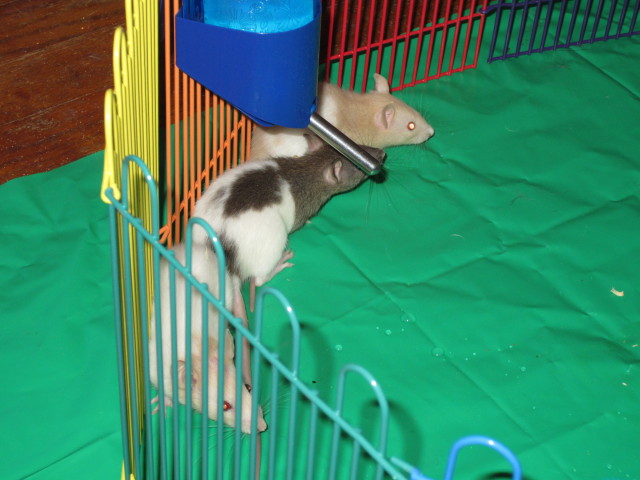 should I but this cage?
QuestionQUESTION: Yesterday I was finally home from sch
should I but this cage?
QuestionQUESTION: Yesterday I was finally home from sch
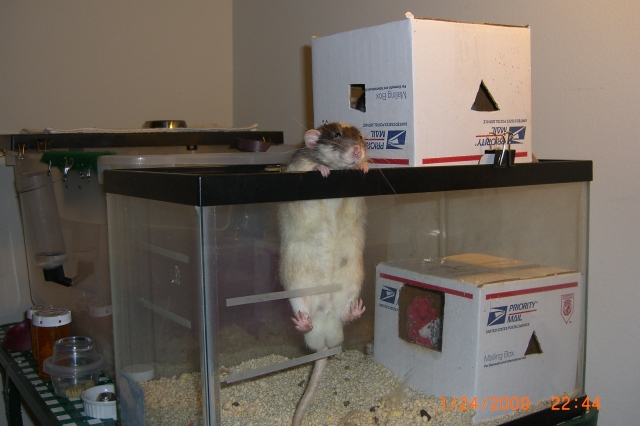 seizures
QuestionQUESTION: i was away on vacation when one of my
seizures
QuestionQUESTION: i was away on vacation when one of my
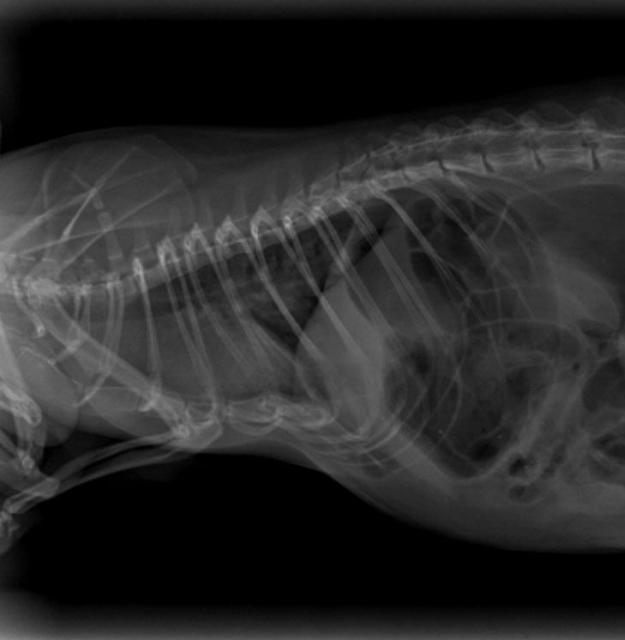 Lung tumor Follow-up: new x-rays
QuestionQUESTION: Surprise! Me again! lol
My boy Burt
Lung tumor Follow-up: new x-rays
QuestionQUESTION: Surprise! Me again! lol
My boy Burt
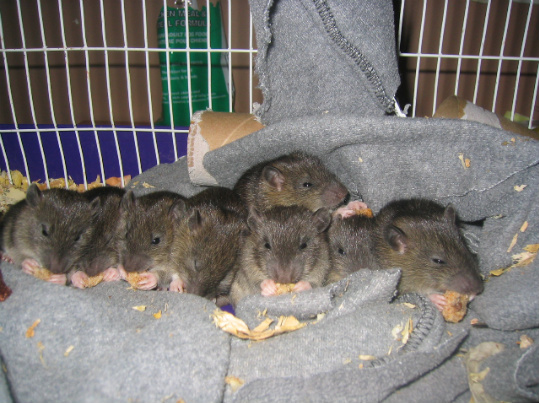 Cat gave me a present this morning...
QuestionQUESTION: Dear Sandra,
Well, the subject says
Cat gave me a present this morning...
QuestionQUESTION: Dear Sandra,
Well, the subject says
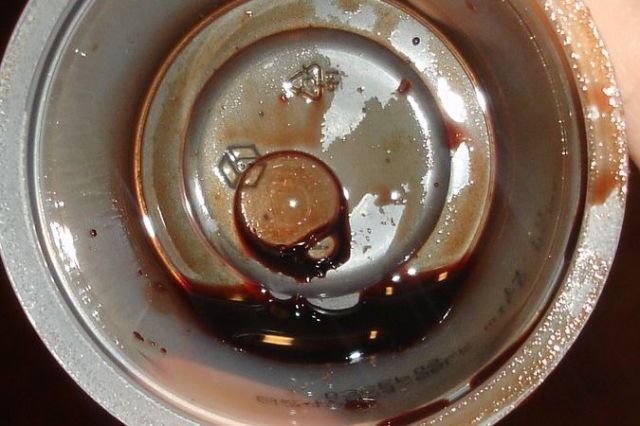 LOTS of blood in urine
QuestionQUESTION: Hi Sandra,
I have already seen a vet
LOTS of blood in urine
QuestionQUESTION: Hi Sandra,
I have already seen a vet